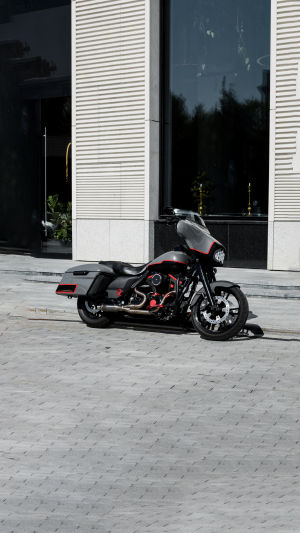Motorcycles, powered by gasoline engines and steered using handlebars to control the front wheel, are two or three-wheeled vehicles known for their lightweight, agility, and swift maneuverability.
They are widely used for purposes such as patrolling, and transporting goods and passengers, and are also utilized as sports equipment. Broadly categorized, motorcycles include street bikes, road racing motorcycles, off-road bikes, cruisers, touring bikes, and more.
In 1885, German inventor Gottlieb Daimler achieved a significant milestone by installing an engine on a frame, giving birth to the world's first motorcycle. Motorcycle-related sports emerged as a competitive activity, utilizing motorcycles for racing categorized into two-wheel and three-wheel models, with various engine cylinder capacities determining classifications.
Racing formats include off-road races, multi-day races, road races, track races, and touring events, where rankings are assessed based on speed or driving skills.
In 1884, British individual Edward Butler added a power unit to a bicycle, creating a three-wheeled vehicle powered by a kerosene engine. In 1885, German automotive pioneer Karl Benz's collaborator, Gottlieb Daimler, developed a three-wheeled motorcycle powered by a single-cylinder, atmospheric gasoline engine.
On August 29 of the same year, Daimler obtained a patent for this groundbreaking invention. Consequently, Daimler is internationally recognized as the inventor of the motorcycle. His initial motorcycle featured a four-stroke internal combustion engine with a displacement of 264 cubic centimeters, producing 0.5 horsepower at 700 revolutions per minute, achieving a top speed of 12 kilometers per hour.
The vehicle had a wooden structure, belt-driven rear wheel, and auxiliary support wheels on each side. Recognizing Daimler's irreplaceable historical contribution, a memorial monument was erected in his honor at Cannstatter Wasen Square in Germany, where he first rode his motorcycle.
Since Daimler's invention in 1885, the development of motorcycles has undergone significant transformations over more than 100 years. The original motorcycle, preserved in the Munich Museum of Science and Technology in Germany, is a genuine representation of the world's first motorcycle patented by Daimler on August 29, 1885.
Constrained by the primitive state of gasoline engines more than a century ago, and the prevailing technology of carriage manufacturing, the original motorcycle differs greatly in appearance, structure, and performance from modern motorcycles. The frame of the original motorcycle was made of wood, with carpentry marks visible in the wood grain.
The wheels were also made of wood, with an outer layer of iron. Underneath the frame were several square wooden frames, supporting the engine. On each side were small support wheels to prevent tipping when stationary, making it effectively a four-wheeled vehicle. The single-cylinder fan-cooled engine transmitted power through a two-stage reduction mechanism involving a belt and gears, propelling the rear wheel.
The seat was saddle-shaped and covered in leather. The engine had a working volume of 264 mL, with a maximum power of 0.37 kW at 700 rpm, only one-fifth of the power of modern basic motorcycles. Its top speed was 12 km/h, not much faster than walking. Lacking shock absorbers or springs, this motorcycle was aptly named the "bone-shaker."
Riding on the cobblestone streets of the 19th century must have been an uncomfortable experience, akin to punishment. Despite its rudimentary nature, this original motorcycle paved the way for continuous innovation and improvement, leading to the evolution of billions of modern motorcycles over more than a century.
In recent years, the global motorcycle market has maintained stability, primarily driven by economic growth in developing countries and increased consumer purchasing power. In contrast, developed countries' motorcycle markets focus more on personalized, high-performance, and environmentally friendly products.
With ongoing technological advancements, the motorcycle industry has achieved significant milestones in innovation, including the introduction of electric motorcycles and the application of smart technologies. These technological breakthroughs have opened up new growth opportunities for the industry.





